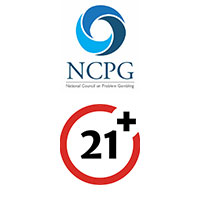One of the reasons so many blackjack players like the game is that it involves skill and decision-making. At the same time, players enjoy some of the non-traditional table games in a casino because they don’t involve much if any, skill.
There’s a new blackjack variant in casinos that combines the two ideas. While 21 Stud is a blackjack game, there is no skill or strategy used by players.
A selling point to casinos by the manufacturer is that 21 Stud has “Slot machine style-action in a live table environment.” That’s a fairly accurate description.
In 21 Stud, a player is dealt two cards. The player wins the base bet if their two cards are greater than the dealer’s two cards.
The main game is quite simple but there are multiple side bets to add a little mystery to the game. The largest side bet payout is 40-1.
In a unique twist, a player can get a “natural” blackjack in two ways. The traditional 10 or Face card with an Ace is blackjack. In 21 Stud a player who receives two Aces is also credited with blackjack.
The game should just be hitting casinos on both the east and west coasts of the US. If 21 Stud proves to be a popular blackjack-inspired game it could be placed in more casinos around the country.
Playing 21 Stud
21 Stud is a blackjack variant that used only two cards from a six or eight-deck shoe for the players and dealer. While 21 Stud isn’t a traditional blackjack game, the cards are scored similarly to the regular version.
The cards are scored the same as in blackjack with one exception. Aces are always 11. Players cannot use an Ace as a one.
In 21 Stud, two Aces are blackjack. Depending on the casino a player will be paid 1.5x (3/2) their wager for blackjack. Some casinos will only pay 1.2x (6/5) for a “natural” blackjack.
A player will win the base 21 Stud game if the total of their two cards is greater than the dealer. The payout for a base game win that isn’t blackjack is even money.
In addition to the base game there are three side bets:
- Mirror Match
- Match 1
- Match 2
The Mirror Match pays the player if they are dealt a pair of cards:
- Suited Aces: 40-1
- Other suited pair: 25-1
- Colored pairs: 12-1
- Mixed pairs: 5-1
The Match 1 and Match 2 side bets pay if the player’s cards match the dealer’s first (Match 1) or second (Match 2) cards. The pay tables are the same:
- Two Suited Matches: 22-1
- One Suited and One Unsuited Match: 15-1
- One Suited Match: 11-1
- Two Unsuited Matches: 8-1
- One Unsuited Match: 4-1
In 21 Stud a player simply needs to place a wager and watch the cards. There are no decisions other than how many side bets a player wants for each hand.
21 Stud House Edge
The house edge for 21 Stud isn’t as good as blackjack but it’s not as bad as some non-traditional table games. It should be noted that, unlike blackjack, the house edge doesn’t change since the player doesn’t make any decisions when playing the game.
The manufacturer of 21 Stud says the base game has a 3.88% house edge. The two Match bets have a smaller 2.1% house edge.
Mirror Match is where players see a massive house edge. The casino has a 6% advantage on the wager that pays as much as 40-1 if a player receives a pair of Aces.
There may be a small house edge difference if a casino uses six decks for 21 Stud versus eight decks along with how much they pay for a “natural” blackjack.
You can see the match behind the house edge of 21 Stud at Wizard of Odds.
There are more hands in play per house since there are only two cards in play each game. In fact, the manufacturer of the game uses this as a selling point for casinos saying 21 Stud has a “high transaction velocity” with reduced time between shuffles.
While the house edge may not be high, more games being played with a negative return to the player means that the losses could up quickly. This is the case with any game where the casino has an advantage.
21 Stud might not be attractive to an experienced blackjack player looking for a game with a low house edge. However, recreational players might enjoy a different take on blackjack where they don’t have to know any kind of strategy.
